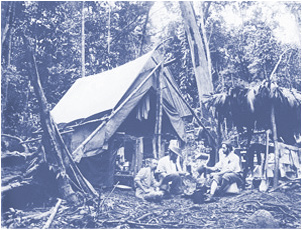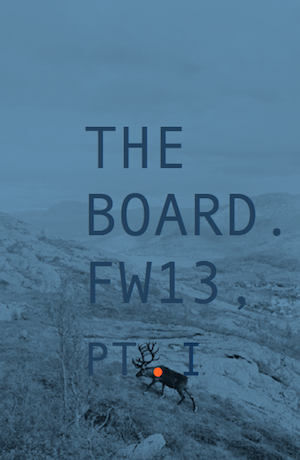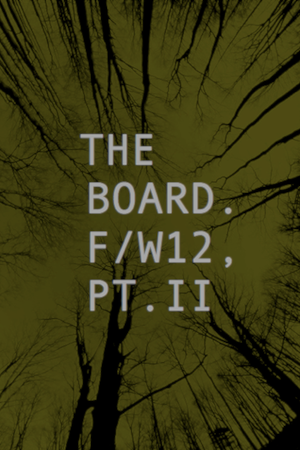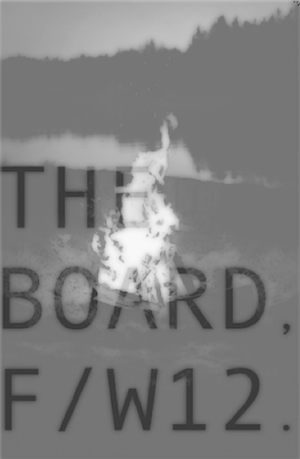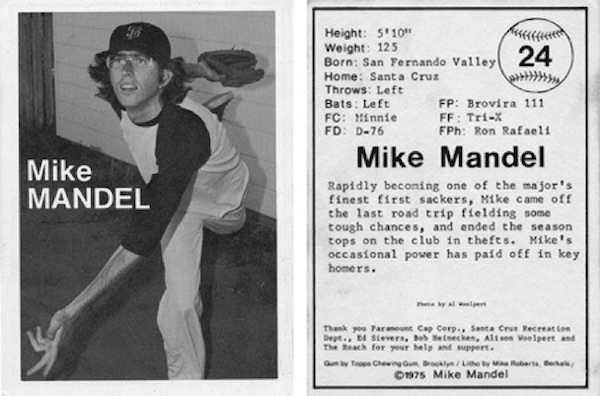
In 1974, photographer and San Francisco Art Institute student Mike Mandel enlisted many close friends and colleagues to satire the then recent cult of celebrity and validation of photography as its own bonafide art form which had been bestowed upon them by the powers that be in the art world. A great essay, written by Aaron Schuman, appeared in Aperture Magazine #2OO in the Fall of 2O1O and is posted below in its entirety. Read on after the jump.
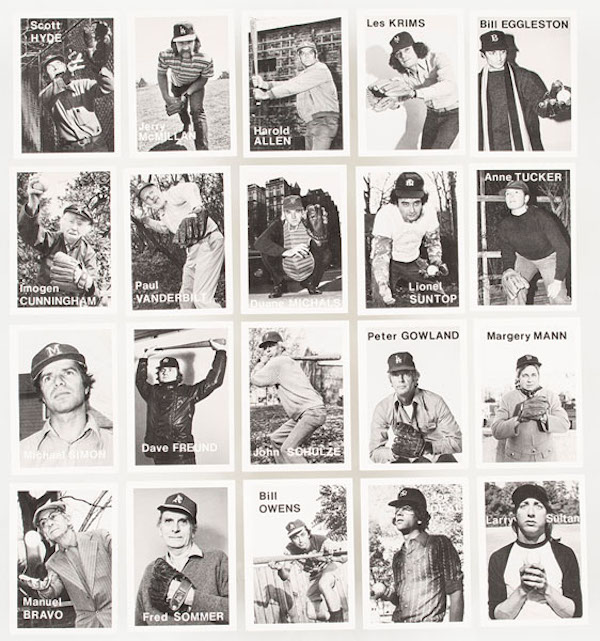
In 1974, just a year before Mike Mandel and Larry Sultan, classmates at the San Francisco Art Institute, were awarded a grant by the National Endowment for the Arts to pursue what eventually became their seminal project, Evidence, Mandel found himself becoming frustrated by the growing competitiveness within photographic circles. “[In the Seventies] it seemed that the photo community was comprised of a group of dedicated artists, who. . . had been snubbed by the art world for having the audacity to negate the imperative of the unique, precious object,” Mandel wrote in 1999, “But a strange thing happened about that time: the art world discovered photography. . . Competitions for NEA grants and university jobs began to revolve around the hierarchy of art world professionals.”
Mandel’s response was to embark on The Baseball Photographer Trading Cards, a collection of 134 informal portraits of photographers posing as baseball players, which were produced in the manner of ordinary trading cards, complete with index numbers, accompanying statistics and quotes on the reverse side, and were then sold in packs of ten—complete with bubble gum donated by Topps, the leading producer of sports-related cards at the time. “I wanted to lampoon the newfound celebrity-hood of photo personalities in the art marketplace,” Mandel explains, also remembering that during his own baseball-card collecting childhood, “cards made the players more accessible—in fact, public property.”
Today, the persistent debate surrounding photography’s validity as Art (with a capital A) can seem dated and tiresome, yet the underlying sense of inferiority that many worthy, accomplished, and celebrated photographers have suffered over the years is well evidenced throughout the medium’s history, in both imagery and photo-related writings. Reassuringly, alongside this streak of angst there has also always run a vein of confidence in the medium as a relevant pursuit in its own right, without need for comparison or justification in relation to the traditional arts. In 1913, after spending several decades doggedly defending the artistic merits of photography, Alfred Stieglitz bluntly summarized his argument: “Photographers must learn not to be ashamed to have their photographs look like photographs.” Several years later, encouraged by Stieglitz’s call for “straight photography”, Paul Strand famously rejected the conceits of Pictorialism—the art-photography of his day—dismissing it as “fuzzygraphs” that ultimately expressed “an impotent desire to paint.” Similarly, Lewis Hine rejoiced in the fact that his documentary work had been recognized for conveying “the value of realistic photography, which has for some time been displaced by the fuzzy impressionism of the day.” And even as late as 1971, Walker Evans was championing photography in the face of its straggling doubters: “[P]hotography, a despised medium to work in, is full of empty phonies and worthless commercial people,” he remarked. “That presents quite a challenge to the man who can take delight in being in a very difficult, disdained medium.”
From these examples and many others, one gets the sense that photographers—at least a certain kinds of photographers—have always taken pleasure in inhabiting the role of the outcast, the charlatan, the underdog. It is not surprising, then, that during the latter half of the twentieth century, when photography finally began to be embraced rather than rejected by the art world, mixed feelings were stirred, and a certain sense of mistrust arose among many practitioners. In response, a number of photographers rapidly turned away from notions of the medium as one of fine craftsmanship and purist aesthetics, and sought refuge in more vernacular territories, experimenting with popular rather than “artistic” forms of photography. In 1963 Ed Ruscha (#22 in The Baseball Photographer Trading Cards, shielding his eyes from the bright sun in search of an imaginary fly-ball) adopted an intentionally amateurish, “snapshot” approach in his Twentysix Gasoline Stations, and later adapted conventional aerial photography for his own conceptual purposes in Thirtyfour Parking Lots (1967). In the late 1960s John Baldessari began incorporating intentionally “bad” or “wrong” photographs into his canvases, instantly imbuing them with artistic merit. In 1971 Stephen Shore produced Amarillo: Tall in Texas, a series of ten generic-looking, geographically unspecific commercial postcards, which he then surreptitiously distributed in various stores and postcard-racks across America.
Mandel’s Trading Cards sit comfortably within this movement—the half-ironic, half-sincere reappropriation of everyday images and photographic contexts—and also reflect an almost exaggerated unpretentiousness through the performances of many of their subjects. A baby-faced Larry Sultan (#13) poses satirically pious as an altar boy, his two hands clasped around a baseball, his wide eyes aimed toward the heavens; a grinning Beaumont Newhall (#103) is subsumed by a face-mask and chest protector, jokingly playing the umpire-in-chief behind home-plate; on the back of her card, Joyce Neimanas (#37) proclaims: “You should bunt to sacrifice yourself to the runner”; and on the front of another, Bill Owens (#31) does just that, bunting the approaching camera back down toward the ground; a bemused William Eggleston (#126) looks at his glove, apparently surprised that the ball has actually managed to land in it—the back of his card reads “No comment.” Even Mandel’s own card (#24) shows him releasing a curveball, subtly implying that although he may appear to be aiming straight at the target, his delivery will deliberately veer away from the strike-zone at just the last second. It’s as if all these newfound “photo-celebrities” are reminding the viewer—and perhaps more importantly, one another—that despite their impending art-stardom, at heart they’re still just goofy kids with cameras who don’t take themselves too seriously.
Of course, today these cards no longer convey accessibility or lampoon the celebrity of their subjects. Instead, they have become coveted icons in their own right, treasured totems to heroes of previous generations. Eggleston’s cool bemusement is now legendary, the disorientating break of Mandel’s artistic pitch is now venerated, and the overall wit and comedic self-mockery of 1970s Conceptual photography is much revered. Mandel fully acknowledges this: in the last several years complete sets of the cards have been auctioned, by Mandel and others, for thousands of dollars. “I find myself in the position of selling these at a premium, participating in the same commercial matrix that the cards originally intended to parody,” Mandel has written. “I can accept that. Now they are historic artifacts of an earlier generation of photography.”
Yet it is important to recognize that these are not just individual artifacts of particular practitioners. Collectively, Mandel’s Trading Cards testify to the humble, joyous, and ultimately supportive spirit of a small, tightly knit network that truly shared a passion for a once “distained medium” at a particularly awkward point in time, and mutually refused the egotism and envy that can so easily accompany the approach of artistic success. Now that photography, the art world, and the “commercial matrix” have fully merged to form a severely competitive atmosphere around the medium, one hopes that Mandel’s Baseball Photographer Trading Cards will not only be relegated to the collectibles market, but might also serve as a quiet reminder that photography thrives best on community and collectivity, rather than through fierce competition. To quote Yogi Berra: “It ain’t the heat; it’s the humility.”
[ POSTS ]
-
 How to Write a College Paper Fast and Get an “A+”
How to Write a College Paper Fast and Get an “A+” -
 Essentials of Writing Good Term Papers
Essentials of Writing Good Term Papers -
 Writing a Scientific Research Paper: Beginner Guide
Writing a Scientific Research Paper: Beginner Guide -
 How to Write a Political Science Research Paper: Guide
How to Write a Political Science Research Paper: Guide
-

-
-

-

-

-
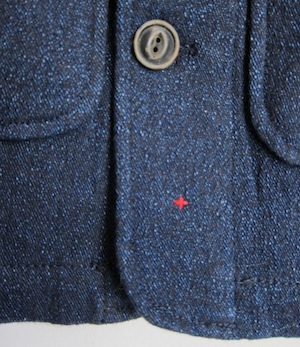
[ F O L L O W ]
-
[ SECRET ARCHIVE ]
-
 2014
2014
-
 2013
2013
-
 2012
2012
-
 December
December -
 November
November -
- GET HANDSOME : POP UP FL . . .
- BY THE OFFICE OF CHARLES . . .
- HEAD TO TOE : SAY CHEESE.
- MOVING PICTURES : A JACK . . .
- AGENDA : MIKAEL KENNEDY . . .
- OUTABOUTHERETHERE.
- THE FALL THREE : DARIAN . . .
- HAPPY THANKSGIVING from . . .
- THE FALL THREE : SANDY . . .
- HEAD TO TOE : EVERYBODY POLKA.
- THE FALL THREE : EMIL CO . . .
- NO WORSE FOR WEAR : THE . . .
- THE FALL THREE : JAKE DA . . .
- AGENDA : "ANALOGUE / VIS . . .
- THE FALL THREE : CHRIS B . . .
- THE FALL THREE : BEN FER . . .
- MOVING PICTURES : CHRIS . . .
- NOW OPEN : JOINERY ONLINE.
- THE FALL THREE : KATE JO . . .
- THE FALL THREE : MATT ED . . .
-
 October
October -
- THE BOARD : FALL, 2012, pt. I.
- AGENDA : APOLIS NOMAD MA . . .
- THE FALL THREE : BRAD BE . . .
- TIE ONE ON : THE BOW TIE . . .
- OUT/ABOUT/HERE/THERE.
- THE FALL THREE : CHRIS G . . .
- THE FALL THREE : CHRISTI . . .
- THE FALL THREE : BOB MYA . . .
- THE FALL THREE : JAY CAR . . .
- THE FALL THREE : MIKAEL . . .
- SUMMERS' FAIREND(s).
- THE FALL THREE : KATHERI . . .
- THE FALL THREE : OWNER/O . . .
- THE FALL THREE : ALAIN D . . .
- THE FALL THREE : MICHAEL . . .
- THE FALL THREE : MATT HR . . .
- THE FALL THREE : JAMES J . . .
- THE FALL THREE : JAMES F . . .
- THE FALL THREE : JEFF TH . . .
- A MILE (OR TWO) IN HIS S . . .
- THE FALL THREE : MAX WAS . . .
- ONCE AGAIN : THE FALL TH . . .
-
 September
September -
 August
August -
 July
July -
 June
June -
 May
May -
 April
April -
 March
March -
 February
February -
 January
January
-
-
 2011
2011
-
 December
December -
- An Afternoon With An Aft . . .
- On Filling Dad's Shoes : . . .
- Out/About/Here/There.
- ...From Secret Forts.
- What Mad Men Were Sellin . . .
- Head to Toe : Strapped.
- Field Report : JOINERY, . . .
- Head to Toe : Fleeced.
- Season 2 : Owner/Operat . . .
- Field Report : Freemans . . .
- The Fall Three : Ben Fer . . .
- Out/About/Here/There.
- You'll Pay for This : HY . . .
- Articles & Effects: US A . . .
- That's That : Punch-drun . . .
- Gentlemen, Start your En . . .
- MoMA Behind the Scenes : . . .
-
 November
November -
- Coming Soon : Girl/Choco . . .
- A Lesson In : Effortless . . .
- Head to Toe : The Outtak . . .
- Happy Thanksgiving from . . .
- The Fall Three : Foster . . .
- Head to Toe : The Blue Period.
- Articles & Effects : Bon . . .
- The Fall Three : Michael . . .
- Penfield + Secret Forts . . .
- On the Subject of : Mame . . .
- Eggleston's South : Stra . . .
- The Fall Three : Andrew . . .
- Agenda : Apolis Flagship . . .
- The Fall Three : Lawrenc . . .
- RIP : Joe Frazier, 1/12/ . . .
- In/Out/About/Here/There.
- Suitable Attire : Freema . . .
- Living in the Night : Jo . . .
- RIP : James Van Doren.
- The Fall Three : Stephen . . .
- When Less is More : Choc . . .
- The Fall Three : Yimmy Yayo.
-
 October
October -
- Head to Toe : Brooklyn R . . .
- What's Doing : New from . . .
- The Fall Three : Todd Ba . . .
- Hands On : Owner/Operato . . .
- An American Deadhead in . . .
- The Fall Three : Chris B . . .
- Head to Toe : Take a Hike.
- The Fall Three : Jake Da . . .
- Fear and Loathing in Gon . . .
- The Fall Three : Joe Gan . . .
- Head to Toe : Back in Black.
- The Fall Three : Chris G . . .
- The Fall Three : Ryan Pl . . .
- Deep Blue : UNIONMADE INDIGO.
- The Fall Three : Chris B . . .
- Feeling : Tobacco, Choco . . .
- The Fall Three : James ' . . .
-
 September
September -
- The Fall Three : Mikael . . .
- Head to Toe : Outtakes.
- The Fall Three : Matt Ba . . .
- The 'Autumn' Three : Gle . . .
- Werner Herzog Eats His Shoe.
- The Fall Three : Antony . . .
- Field Report : Hickoree' . . .
- The Fall Three : Matt Hr . . .
- R.I.P.
- On the Agenda : Willem d . . .
- The Fall Three : Max Was . . .
- The Fall Three : James F . . .
- Out/About : Here/There.
- The Fall Three : Chris B . . .
- The Fall Three : Michael . . .
- On the Radar : Oi Polloi . . .
- Another Look : Bill Cunn . . .
- The Fall Three : Jeff Th . . .
- In Retrospect : 3Sixteen . . .
- Breaking Ground : Same F . . .
- The Man in Black : 2/26/ . . .
- Articles & Effects : Sha . . .
-
 August
August -
- Transit Issue : Apolis + . . .
- Thirty Minutes or Less : . . .
- Articles & Effects : Hem . . .
- Summer Blues : Oak Stree . . .
- Summer Listening : Dirty . . .
- Keruoac in Shorts : Miki . . .
- It's Back : The Rig Out, . . .
- Studio Visit : Stanley & . . .
- Pictures of Pictures : S . . .
- Coming Attractions : Bal . . .
- Epic Road Trip : Hamilto . . .
- Out/About : Here/There.
- R.I.P. Cy Twombly, 4/25/ . . .
- Graphic in Nature : Hatc . . .
- Happy Fourth from Secret Forts.
- Goin' Back to Cali: US M . . .
-
 June
June -
- Moving Pictures: The Rig . . .
- The Map: Wallabout Bay a . . .
- The Board : Full Blown Summer.
- Out & About / Here & There.
- Johnny and the Quest for . . .
- Greetings From Old Far R . . .
- Shelf Life : WORKWEAR 2, MONO.
- Head to Toe : Get Lost.
-
 May
May -
- Flahutes and Roleurs : T . . .
- Field Test : Apolis + Ka . . .
- FOBs.
- On the Subject of : Psyc . . .
- Riding Dirty : Motorcyle . . .
- Head to Toe : None of Yo . . .
- Out&About; / Here&There.;
- Malcolm X, b. 5/19/25.
- Moving Pictures : The Hi . . .
- Field Report : UNIONMADE . . .
- The (Spring) Board, pt. . . .
- The Crown Life : Big Boi.
- Head to Toe : The Drug Rug.
- Of Note : Hungry Ghost, . . .
- Shelf Life : Barry McGee . . .
- On the Subject of : Fill . . .
- Head to Toe : May Flowers.
-
 April
April -
- Good Day to Dye : The Hi . . .
- The Map : UNIONMADE, San . . .
- Agenda : Antony Crook / . . .
- Modern Man : Glenn O'Brien.
- R.I.P. Tim Hetherington.
- Head to Toe : Trail Mix.
- Backside.
- Head to Toe : Army / Navy.
- The (Spring) Board : Ear . . .
- Hankering For : A Crepe (Sole).
- Out&About; : Here & There . . .
- A Sunday in Hell : Paris . . .
- Head to Toe : Early Spring.
- From the Inbox : Oi Poll . . .
-
 March
March -
- Field Report : J. Crew, . . .
- Welcome to the Future.
- Case Study : Common Thre . . .
- Happy St. Pat's Day.
- Nirvana, '88.
- On the Radar : W Brand D . . .
- Moving Pictures : The Gh . . .
- Agenda : Nepenthes Relie . . .
- Dirty Old Man : Charles . . .
- Agenda : US Open, Stratt . . .
- Open Tab : Items of Interest.
- Out & About : The Head B . . .
- Yo!
- Descending Order : Matth . . .
- Lighten Up: The Hill-Sid . . .
-
 February
February -
- R.I.P. : Manganaro's Gro . . .
- Johnny Cash : Live at Sa . . .
- The Man in Black : Johnn . . .
- Head to Toe : Here Comes . . .
- Guaranteed Fresh : Ramel . . .
- Yo Joe: Portraits of a B . . .
- The Big Three : Jones, R . . .
- This Just In : Apolis, S . . .
- Head to Toe: Buttoned Up . . .
- At Work: Total Loser, Ba . . .
- Coming Attractions : The . . .
- Head to Toe: Batten Down . . .
- Of Material Interest: Th . . .
- Head to Toe: The Warm-Up.
- Erased de Kooning Drawin . . .
- Incoming: The Apolis Ind . . .
- At Work: Francis Bacon, 1966.
- At Work: Lucien Freud, B . . .
- Lightweights.
- R.I.P.
- Anarchitect: Gordon Matt . . .
- Of Material Interest: Th . . .
- Pictures of Pictures: Ki . . .
-
 January
January -
- Iconic: Brando, On the W . . .
- Head to Toe: Brooklyn Sn . . .
- The Drawing Board: Winte . . .
- On the Subject of: The F . . .
- Articles & Effects: Sir . . .
- Agenda: Bill Callahan at . . .
- On the Subject of: Made . . .
- How To: The Making of Mo . . .
- Father of the Inappropri . . .
- Girl Talk: Willem de Koo . . .
- Head to Toe: Vermont Bound.
-
-
 2010
2010
-
 December
December -
- Happy New Year from Secr . . .
- Radiant Child: Jean-Mich . . .
- Debatable: 3Sixteen SL's . . .
-
 November
November -
- 30 Seconds, 30 Century M . . .
- Outbox: The Rig OUt #3.
- Extra, Extra: Koji Kusak . . .
- The Fall Three: Trespass . . .
- Watch Your Step: Grant T . . .
- The Fall Three: Jou-Yie . . .
- Field Report: C'H'C'M' / . . .
- Shelf Life: My Rugged 21 . . .
- Moving Pictures: Apolis . . .
- The Map: Read all About . . .
- Apocalypse Tomorrow: Apo . . .
- The Fall Three: Carl Chi . . .
- Revisited: The Rig Out, . . .
- Field Report: J. Crew SS . . .
- "Far from Yokohama& . . .
- The Fall Three: Matt Hra . . .
- Solid Rock & Shifting Sa . . .
- Out&About;: Here and Ther . . .
- The Fall Three: Ben Fere . . .
- More Things Change, More . . .
-
 October
October -
- Now Available: The Rig O . . .
- A Lesson in Star Identif . . .
- At Work: Pablo Picasso: . . .
- Supper is Served: The Hi . . .
- The Fall Three: Jay Carr . . .
- From the Inbox: Outlier . . .
- On the Subject of: The L . . .
- Les Them: G-L-O-R-I-A.
- The Fall Three: Kate Jon . . .
- In the Making: Otter-Mes . . .
-
 September
September -
- Excerpted: And You, Brutus?
- Out&About;: Here&There.;
- It's Coming: The Rig Out . . .
- The Fall Three: James Fo . . .
- Open For Business: One T . . .
- I (HEART) Alexis Krauss.
- Jake Davis Shot Me.
- The Fall Re-Boot, pt. I . . .
- Motorcycle Diaries: Apol . . .
- Moving Pictures: New Yor . . .
- On the Road Again: One T . . .
- The Fall Three: Todd Bar . . .
- Moving Pictures: The Ill . . .
- The Fall Basics: In the Hood
- Excerpted: Frank Muytjen . . .
- The Fall Three: Max Wast . . .
- Finishing Touch: Levis W . . .
-
 August
August -
- First Look: Oak Street B . . .
- Empire State of Mind.
- Debatable: 3Sixteens, 9 . . .
- In Good Company: Hickore . . .
- Head to Toe: Covert Ops.
- First Look: Baldwin, F'1 . . .
- Marine Player.
- Moving Pictures: Tempora . . .
- Sean Penn, b. 8/17/60
- They Take a Licking and . . .
- Essentials: Apolis Activism.
-
 July
July -
- Epic Field Trip: Billyki . . .
- Saturdays\ NYC.
- The Drawing Board: Summe . . .
- Articles&Effects;: Keroua . . .
- Still Got it: Mike Carro . . .
- It's in the Wash: Imogen . . .
- Happy Fourth.
- Allez.
- Excerpted: NYTimes visit . . .
- Head to Toe: An Out East . . .
-
 June
June -
- The Once Future Boy King . . .
- This Just In: Velskoen D . . .
- The Brits are Arriving, . . .
- I HEART M G.
- Into Right Now: Mark McN . . .
- Get to Know: Baron Wells.
- T Minus 30.
- On the Subject of: The T . . .
- Impracticality and Safet . . .
- Swap Meet: Tyler Manson . . .
- The Drawing Board: Summe . . .
- Training for Young Write . . .
- Agenda: June 21, Interna . . .
- Happy Fathers Day.
- From the Inbox: New Quod . . .
- On the Subject of: The B . . .
- Head to Toe: Tooling Aro . . .
- Bill Viola, Street Music, 1976.
- The "Steve Jobs&quo; . . .
- Pictures of Pictures of: . . .
- The Mystery of The John . . .
- Agenda: Pencil This In.
- Simple is Beautiful: Vol . . .
- Shred-Proof: Apolis + Ka . . .
- Not Since 1961.
- Ode to an American Great . . .
- On the Subject of Americ . . .
- In (the) Details: J. Crew.
- On the Desk of: Secret Forts.
-
 May
May -
- R.I.P. : Louise Bourgeoi . . .
- Pictures of Pictures of: . . .
- Debatable: 3Sixteens, Si . . .
- The Long and Short of it . . .
- Object Effection: Editio . . .
- He and I Both: "Thi . . .
- Iconic: The Brooklyn Bri . . .
- The Revenge of Greg LeMo . . .
- California Dreamin': Ale . . .
- Into Right Now: Oliver S . . .
- On the Road, Out&About.; . . .
- Construction Ahead.
- Dennis Hopper, b. 5/17/36.
- Profiling Modern Activis . . .
- Tables Turned: 01\Magazi . . .
- The Dirty Dozen: Q&A; w/ . . .
- Shelf Life: The Supreme Book.
-
 April
April -
- One Final Note Re: The K . . .
- On the Subject Of: The R . . .
- A Derby Standard: The Mi . . .
- The Radiant Child: Jean- . . .
- OMFG (&Co.;) : THING MAKERS.
- In the Air: Head to Toe, . . .
- How a Wanderer is Made: . . .
- HOME AND AWAY: CHRIS MIL . . .
- Q&A;: FREE/MAN + SECRET FORTS.
- First Look: Freemans Spo . . .
- Drunk Girls, Panda-monium.
- Out & About.
- Surf LIFE.
- A Photographic Memory: M . . .
- Just Another Sunday in H . . .
- So Into: Yuketen Fisherm . . .
- No Feelings: The Sex Pis . . .
- Spring Layers: Shirt Jac'in.
- R.I.P. Malcolm McLaren, . . .
- On the Subject of: A Day . . .
- On the Subject of: Thing . . .
- No Two Alike: O'Shields- . . .
- R.I.P. The Simple Connoi . . .
- Epic Field Trip pt. II: . . .
- A Dark & Stormy Night: J . . .
- 13 Camera Phone Photos o . . .
- Everybody's Work is Equa . . .
-
 March
March -
- ...And While You're At It.
- On the Subject of: Summe . . .
- Summer Standards: Tretor . . .
- Been There, Done That: W . . .
- Tighten Up.
- Iconic: Kurosawa's 100th.
- Received: O'Shields-Rick . . .
- Agenda: Ryan McGinley, E . . .
- Dutch Harbor: Where the . . .
- Happy St. Pat's...
- Wear&Tear;: Start w/ Type . . .
- Total Ripper: Grant Tayl . . .
- Debatable: 3Sixteens, 3 . . .
- Q&A;: Studio Visit w/ Dan . . .
- Making of: Tale of Two Shoes.
- Pacific Time.
- The Great Outdoors: Rock . . .
- Into Right Now: A New Yo . . .
- On the Subject of: Steve Keene.
- In the Details: Zipper P . . .
- GQ, Behind the Scenes: F . . .
- Repeater: Steve Keene.
- "Do you need to be . . .
- Sometimes Good Guys Don' . . .
- L'iconique: The Quiet Ch . . .
-
 February
February -
- Nostalgia: Dinosaur jr.
- The Great Outdoors: The . . .
- Johnny Cash, b. 2/26/32
- Moving Pictures: Rapha + . . .
- From Manchester to New Y . . .
- Happy V Day.
- Into Right Now: Stanley . . .
- R.I.P.: Brooklyn Banks.
- Six More Weeks.
- The Aesthete: The Pursui . . .
-
 January
January -
- On the Subject of: High . . .
- R.I.P. : J.D. Salinger, . . .
- Get Out of Town: Beckel . . .
- Introducing: Tender.
- On the Subject of: Ameri . . .
- American Outsider: Jack . . .
- Zipper Porn: ACL & Co.
- Agenda: C'H'C'M' Pop-Up.
- Head to Toe: From the Cl . . .
- Top Five Game Changers: . . .
- Happy Birthday Champ.
- Follow Up: FOLK SS10 Pre . . .
- On the Subject of: Seafaring.
- At Work: Artist, Patriot . . .
- Agenda: Arbus & Egglesto . . .
- On the Subject of: Frien . . .
- Excerpt: Hickoree's Pop- . . .
- Wrapped-Up: Secret Forts . . .
- Winter Escape Plan: Vermont.
- On the Subject of: The T . . .
- On the Subject of: " . . .
- Cinema Studies 101: The . . .
- Literary Heroes: Robert . . .
- At Work: "Painters . . .
-
-
 2009
2009
-
 December
December -
- Time to Think About Taki . . .
- Happy Holidays from Secr . . .
- The Greatest Movie Never . . .
- The Fight that Almost Wa . . .
- On the Subject of: Adole . . .
- The Hangover: Mike Carro . . .
- Bright Girls Should Know . . .
- First Watch on the Moon: . . .
- On the Subject of: Seaso . . .
- Iconic: Bjorn & John.
- On the Subject of Inclem . . .
- Head to Toe: It's Now Wi . . .
- On the Subject of Cutler . . .
- 11th Hour : Last Minute . . .
- Articles & Effects: Eins . . .
- The Map: Adios Bonita, C . . .
- In, Out & About: NY & TN.
- From the Desk of: Daiki Suzuki.
- Iconic: Raymond Pettibon . . .
- Spring Forward: Folk, SS10.
- Recent (re)Viewing: &quo; . . .
- Moving Pictures: Dock El . . .
- The Bean Boot Project: S . . .
- Brief Hiatus: Secret For . . .
-
 November
November -
- Samuel Langhorne Clemens . . .
- On the Subject of: Josef . . .
- At it Again: J.Crew, Lat . . .
- Moving Pictures: Four Se . . .
- Happy Thanksgiving.
- Sketchy: Secret Forts + . . .
- Lookbook: Oliver Spencer, SS10.
- Street Iconic: sataN, ba . . .
- Handcrafted Simplicity: . . .
- Man Up: The Pop Up Flea, NYC.
- Out & About: SFs in SF pt. II.
- Head to Toe: Home for th . . .
- Out & About: SF pt. I. C . . .
- On the Subject of Modern . . .
- Light Handed Modernity: . . .
- Splitting Twilight: Kris . . .
- It's Coming Back: The Ri . . .
- Epic Field Trip: DQM, FW . . .
- The Map: UNIONMADE, SF CA.
- Coast to Coast: SFs in SF.
- Agenda: Fantastic Mr. Fox.
- Typewriter meets Freeway . . .
- Period Piece: "A Lo . . .
- In the Details: MAKR's Mark.
- A Look Inside: Hickoree' . . .
- More Moving Pictures: HB . . .
- Much Play: Imogene + Willie.
- Empire State of Mind: Ya . . .
- As Seen On: Billykirk + . . .
- In Good Company: Freeman . . .
- No Alarms and No Surprises...
- Out & About: I Heart NY, pt. I.
- The Map: The Field House . . .
-
 October
October -
- About a Bike: Freeman Tr . . .
- Agenda: Get Handsome, Again.
- Moving Pictures: Black K . . .
- These Just In: Alden + W . . .
- Agenda: Urs Fisher, &quo; . . .
- From the Desk of: Shelte . . .
- Dog Day Afternoon: � . . .
- Song of the Open Road: O . . .
- On the Radar: Bertelli B . . .
- Moving Pictures: Epicly . . .
- Coming Attractions: J. C . . .
- Agenda: WNW Pop-up Openi . . .
- Articles & Effects: The . . .
- This Just In: Momotaro D . . .
- The Board: Fall, pt. II.
- Out & About: LL Bean Sig . . .
- On the Radar: Aether Out . . .
- The Hit List: pt. II, Wi . . .
- At Work: Fairfield Porte . . .
- Moving Pictures: Levi's . . .
- Printed Matter: "Et . . .
- White Collar Time: Secre . . .
- Things Done Right: Freem . . .
- Collected Good Things: A . . .
- R.I.P. : Irving Penn, 19 . . .
- On the Subject of: Par Avion.
- On the Subject of: Corre . . .
- Agenda: Blak Friday, 11/27/09.
- FYI: Happy Bloody Mary Day.
- The Map: 10ft. Single, B . . .
- Things Done Right : Jame . . .
- Moving Pictures: They Me . . .
- Let it Come Down: Paul Bowles.
- This Just In: Billykirk . . .
- Iconic: James Dean, 1931-1955.
-
 September
September -
- On the Radar for Her: Wo . . .
- The Find: Vintage Woolri . . .
- Tough as Hell: "The . . .
- Zipper/Button Porn, etc. . . .
- Full on Classics: Clarks . . .
- Agenda: PopRally, An Eve . . .
- On the Street & Around Town...
- The Board: Fall, pt. I.
- Iconic: The Cannibal, Ed . . .
- Epic Field Trip: Apolis . . .
- Moving Pictures: "B . . .
- The Sportsman's Pal: The . . .
- Carry on, take vitamins, . . .
- On the Subject of: Foul . . .
- The Hit List, pt. I: Into Fall.
- Excerpt: Valet, 3 Questions...
- Epic Field Trip: Apolis . . .
- Fall Reading: DQM Lookbook.
- On the Radar: Ilse Crawf . . .
- The Blind Five: Drinkin' . . .
- Moving Pictures: "T . . .
- In the Details: Zipper P . . .
- Agenda: "Looking In . . .
- This Just In: Barbour + . . .
- Iconic: Professor Seagul . . .
- Moving Pictures: Steven . . .
- Into Right Now: Unis Osc . . .
- R.I.P. Jim Carroll, 1949-2009.
- Excerpted: T Mag, Men's . . .
- Agenda: Luc Tuymans @ MoMA, SF.
- Now Up: Dana Lee, SS10.
- Now Up: Apolis SS:10.
- I was just gettin' started...
- The Map: Jack Spade + Ap . . .
- Never Out of Style: Jay . . .
- "Le Mystere Picasso . . .
- Into Right Now: DRKSHDW . . .
- I (heart) Marisa Tomei.
- On the Subject of Classi . . .
- Classic: Volvo PV 445 Duett.
- Archives: "There Wi . . .
- A Book by its Cover: Buk . . .
- Head to Toe: Summer's En . . .
- Coming Attractions: Apol . . .
- Into Right Now: SeaVees . . .
- "Let's Get Lost&quo; . . .
- Into Right Now: EG Black . . .
- Classic: "The Gradu . . .
- Moving Pictures: Mister . . .
- Tough as Hell: R. Ruben, . . .
- Iconic: The American Greaser.
- Classic 80's: 7-Eleven C . . .
- The Drawing Board: Roman . . .
- Excerpt: The Making (and . . .
- Agenda: Apolis + Las Vegas.
- On the Radar: Crescent D . . .
-
 August
August -
- Personal Valet, Brad Pitt.
- Back to School with R.E. . . .
- Object Affection: Stanle . . .
- On the Subject of: Apoli . . .
- On the Radar: Apolis f/w 'o9.
- Independent Lens: " . . .
- Agenda: Freeman's Moving Sale.
- "A Basterd's Work i . . .
- On the Radar: Alex Carle . . .
- On the Shelf: "Beac . . .
- Into Right Now: Quoddy f . . .
- Excerpted: Dave Eggers o . . .
- Agenda: Unis + Smith & Butler.
- "Pleasure for Every . . .
- Agenda: "Those Abou . . .
- On the Beat: Richard Hai . . .
- R.I.P. John Hughes, 1950-2009.
- One for the Road: DQM Lo . . .
- On the Radar: Barbour + . . .
- On the Subject of: Durab . . .
- On the Subject of: R.E.L . . .
- The Map: On the Subject . . .
- Philanthropy, afoot: Apo . . .
-
 July
July -
- Coming Attractions: &quo; . . .
- The Map: Imogene + Willi . . .
- R.I.P. Merce Cunningham, . . .
- One for the Road: The Ba . . .
- On the Radar: C Chauchat Ties.
- American Classic: Levis . . .
- This shit can not be denied.
- One for the Road: Incase . . .
- Head to Toe: Governer's . . .
- On the Subject of : Harm . . .
- Make sure you have some . . .
- R.I.P. Julius Shulman, 1 . . .
- "I'm on the indiffe . . .
- FUCK EM IF THEY CANT TAK . . .
- On the Radar: J. Crew Fall '09.
- Re-watch: "Kids&quo; . . .
- Iconic: Jackson Pollock '51.
- The Map: Omen.
- This Weekend, Go Get Wet...
- T Minus One Month...
- NYTimes: "The Peel . . .
- The Dirty Dozen: Secret . . .
- R.I.P.: Dash Snow, 1981-2009.
- One for the Road: Linus . . .
- Bookmark: Rapha Blog.
- On Assignment: Your Summ . . .
- The Dirty Dozen: Secret . . .
- Iconic: Jasper Johns, Am . . .
- Articles & Effects: Robe . . .
- If You're on the Island...
- Into Right Now: Coors Banquet.
-
 June
June -
- Guest Head to Toe: Jake Davis.
- Jokes: Richard Prince.
- Video: Mark Gonzales Get . . .
- Iconic: The Cedar Tavern . . .
- On the Radar: 3Sixteen D . . .
- Into Right Now: Steven A . . .
- Agenda: The Pop Up Flea, 6/26.
- Perfect Fit: Alden of Ne . . .
- Q&A;: Secret Forts + Valet.
- On the Subject of : ACL' . . .
- Another ACL Scoop: Gant . . .
- On the Subject of Oi Polloi...
- They Have Arrived: The R . . .
- A day with 3sixteen.
- Get This: "Organic . . .
- NYTimes: "All-Ameri . . .
- On the Subject of: More . . .
- Excerpt: ACL + Apolis Activism.
- If You're in the Neighbo . . .
- There's Blood on the Seas...
- The Map: Melet Mercantil . . .
- Coming Soon : The Rig Ou . . .
- On the Subject of: His Airness.
- Classic: Mars Blackmon a . . .
- Articles & Effects: Cy T . . .
- The Map: Unis Pop Up, So . . .
- In the Details: Zippers.
- Iconic: Philip Johnson, . . .
- Exit Strategy: Marfa, TX.
- On the Subject of: COST&REVS.;
- Agenda: BARR, 6/12/09.
- Get High: NYMag strolls . . .
- Ca-lassic: "Heavy M . . .
- Get Your Hands on This: . . .
- Into Right Now: Outlier . . .
- David Carradine, 1936-2009.
- Morning Paper: NYTimes, . . .
- The Map: Stevan Alan Baz . . .
- Iconic: Jean-Luc Godard
- Morning Paper: NYTimes, . . .
- Sam Maloof, 1916-2009.
- So Long, Conan...
- Into Right Now: Moscot + . . .
-
 May
May -
- A Love Letter..."Ma . . .
- On the Subject of: The I . . .
- The Map: Brooklyn Standa . . .
- On the Radar: The Hill-S . . .
- Wish I were still...
- Tough as Hell: Dirk Skre . . .
- A Strange Form of Life...
- Reminder: Smith + Butler . . .
- James Franco Destroys th . . .
- Guest Head to Toe: Ryan . . .
- "After Hours", 1985.
- Live: Ratatat.
- Into Right Now: More Ste . . .
- The Perfect Storm? The B . . .
- On the Subject of: Brice . . .
- (Brice Marden) On the Su . . .
- On the Subject of: Mark . . .
- At Work.
- Best Yet...h(y)r 12.
- Along for the Ride: Outl . . .
- The Board.
- Spring Essential: Apolis . . .
- Behind the Scenes: J.Cre . . .
- Tough as Hell: #AJ19261
- Into Right Now: Another . . .
- The Map: Rye.
- Since 1879: Hatch Show Print.
- Trailer: "The Road& . . .
- Agenda: Dan Graham: Beyond.
- Into Right Now: Gitman B . . .
- On the Radar: D.LEE a/w 'o9.
- Iconic: Solomon R. Gugge . . .
- Agenda: BPB, 5/20/09.
- Frank Stella, 1972.
- Guest Head to Toe: Jay C . . .
- Watch: "De battre m . . .
- ...Do I hear $150? $150?
- Ooooh, Baracuta.
- Preakness Infield, 2008.
- For the Ride: Outlier Tr . . .
- Agenda: Bill Callahan, 6/14/o9.
- On the Map: 484 Broadway, NYC.
- Agenda: Smith + Butler A . . .
- NYTimes: Guys on a Mission...
- Falling Forward: Rogues . . .
- Object Affection: Best Made Co.
- The Map: BK Watering Hol . . .
- Iconic: Julius Shulman.
- Head to Toe: Still Raining?
- "Inside New York's . . .
- Domestic Furniture/Domes . . .
- Fight Club.
- Agenda: I Heart Mom.
- The Drawing Board: Miste . . .
- Morning Paper: "Mad . . .
- On the Subject of...
- Exerpted: Interview, May 'o9.
- I Want to Go There...
- Pastime: Horse Shoes.
- The Map: Schiller's Liquor Bar.
- His Airness, Tar Heel.
- On the Radar: Engineered . . .
- The Great Outdoors : Fie . . .
- Live: Joy Division, 1979.
- Want: Krane Elliot Waxed . . .
- Things Done Right: Marlow Inc.
- Iconic: Irving Penn.
- The Map: Paula Rubenstein.
- Object Affection: Jason . . .
- Agenda: Apolis + Katin M . . .
- Mine That Bird...
- On the Radar: Martin Clothing.
- Into Right Now: Wings + . . .
-
 April
April -
- the Board.
- Greetings From...
- Back in the Days: Jamel . . .
- On the Subject of Jim Ja . . .
- Essentials: Spring Shirt . . .
- Must Read: "Tijuana . . .
- The Map: Watering Holes.
- Guest Head to Toe: Steve . . .
- Season-less: Outlier Mer . . .
- Iconic: Jim Jarmusch.
- Agenda: A-Z Collection S . . .
- In Motion: 3Sixteen f/w 'o9
- Agenda: Dark was the Nig . . .
- Hand Sewn.
- On the Subject of Cafe M . . .
- The Map: Cafe Moto, BK, NY.
- Exit Strategy: Surf Lodg . . .
- Live: Jeff Mangum, 40 Wa . . .
- Tough as Hell: Jack Eldridge.
- Excerpt: Fortune, " . . .
- Things Done Right: FSC.
- On the Radar: UNIS, s/s 'o9.
- Scanning the Archives: T . . .
- NYTimes: Lighthouses of . . .
- Head to Toe: Early Sprin . . .
- Launch: D.LEE online
- "Bottle Rocket" . . .
- Recognize(d): We Are the . . .
- Now Available: Filson x UO.
- Finish Line: Boston Marathon.
- Iconic: D.B. Cooper.
- On the Radar: Earnest Al . . .
- RIP: J.G. Ballard, 1930-2009.
- Spring List: Stephan Sch . . .
- Epicly Later'd: The Maki . . .
- American Life: Banjo & F . . .
- On the Radar: Fenwick by . . .
- ...Between the Bars.
- On the Map: Darr.
- Object Affection: NK Shop.
- ...But it's a fact that . . .
- Secret Forts Recommends: . . .
- Heavy Rotation: B.C.
- Spring Road Trip: Dia:Beacon.
- On the Map: C'H'C'M'.
- Trout Fishing in America . . .
- Alfred Hitchcock Presents...
- Guest Head to Toe: Drink . . .
- Another All Plaidout Hom . . .
- "Zero", SNL...
- "The Orchid Whisper . . .
- "This Machine Kills . . .
- Agenda: Mikael Kennedy @ . . .
- Spring List: Gitman Bros . . .
- Gimme Shelter.
- It Happened in Maine...
- For Spring Rides: Lazy M . . .
- Fade to Clear: Moscot.
- Iconic: Steinbeck, 1902-1968.
- Lunch Time Post: NYMag G . . .
- Good Advice: "Never . . .
- Young Masters.
- Guest Head to Toe: A Res . . .
- Simplicity: Ted Muehling.
- Nostalgia: Pixies, '92.
- Excerpt: Esquire, " . . .
- On the Map: Upland Tradi . . .
- Re-Watch (many times): & . . .
- Curious Local Attraction . . .
- Some Spring Essentials: Pt. 1.
- Agenda: Scott Campbell, . . .
- Secret Forts Recommends: . . .
- On the Shelf: A Tale of . . .
- Free&Easy;: Case Study, A . . .
- Morning Paper: Rapha in . . .
-
 March
March -
- Tough as Hell: #66185.
- In (serious) need of: Ex . . .
- Iconic: Loveless Cafe.
- "I Am Goodbye", BPB.
- Spring Road Trip: Blue H . . .
- On the subject of: Edwar . . .
- On the Radar: Damien Hir . . .
- Head to Toe: Early Spring.
- On the Map: Save Khaki, NYC.
- Classic: BMW Bavaria.
- Things Done Right: Ace Hotels.
- Hollywoodland.
- Iconic: Ansel Adams, 1902-1984.
- Want: Russell Chukka boot.
- Site Seeing: South2West8
- Sring List: In it for th . . .
- On the Subject of Vintag . . .
- Want: Vintage Military @ . . .
- On the Agenda: Smith+But . . .
- Another Outlier Winner: . . .
- Spring 'o9 Lookbook: Rog . . .
- On the Shelf: "What . . .
- Things Done Right: Sid Mashburn
- Trailer: "Where the . . .
- LIFE: The Cast, 1947.
- Things Done Right: BDDW...
- Want: Freeman's Sporting . . .
- The Fader: Capsule 'o9...
- On the Radar: Outlier Em . . .
- Spring List: Steven Alan . . .
- On the Radar: Yuketen Ra . . .
- All Plaidout digs deep i . . .
- Coming Attraction: The S . . .
- Head to Toe (into Spring . . .
- LIFE: Trout Fishing in A . . .
- On the Radar: James Kend . . .
- Post-Rockwell Saturday E . . .
- All Plaidout visits LL Bean...
- In the Closet of: (dear . . .
- The Revival: The Harrington.
- On the campaign trail...
- Iconic: Ray Johnson, 1927-1995.
- In the Details: Wings+Horns...
- Want: Apolis Activism Ca . . .
- Bookmark(s): for your vi . . .
- Ben Shahn, 1898-1969.
- Want: Engineered Garment . . .
- On the Map: Jack&Jimbo;'s . . .
- Rapha: "Inside Stor . . .
- Object Affection: 5 things...
- Arrow Collars & Shirts...
- Work Projects Admin. est. 1935.
- Spring List: A.P.C. Ging . . .
- On the Radar: Fiber&Fell; . . .
- Head to Toe (Winter into . . .
- Much Denim: Kanye on Idol...
- On the Radar: D.Lee, a/w . . .
- Rapha Continental: " . . .
- Iconic: Eames+Saarinen & . . .
- On the Shelf: "Rebe . . .
- Might as Well Have the B . . .
- Archives: "The Grea . . .
- Agenda: Bonnie Prince Bi . . .
- Head to Toe: Winter Look . . .
- Riding the Rails: Califo . . .
- Family History: "Ri . . .
- On the Radar: D.Lee, a/w . . .
- Spring List: RL Boat Shoe...
- Family History: "Un . . .
- Scanning the Archives: T . . .
- "Public Enemies&quo; . . .
- New York State of Mind: . . .
- LIFE: on deck, 1951...
- Articles & Effects: Jack . . .
- On the Radar: Nigel Cabourn...
- Agenda: Martin Kippenber . . .
- July 4th, 'o6 Block Island...
- Into Right Now: Garbstor . . .
- The pleasure's all mine sir...
- Spring List: Nom de Guer . . .
- LIFE: Navy Ink...
- Want: Engineered Garment . . .
- Killed It: Dan Auerback . . .
- "Inglorious Basterd . . .
-
 February
February -
- Classic: "High and . . .
- Rapha: s/s 'o9...
- 6:35, HQ...
- Via The Pursuit Aestheti . . .
- Life: Queens Midtown Tun . . .
- Spring List: Patrick Erv . . .
- On the Radar: Jack Spade . . .
- Gregory Peck: "Twel . . .
- A couple things...
- Heavy Rotation: M. Ward . . .
- Surface 2 Air, s/s 'o9
- Simparch: "Free Bas . . .
- Polaroids: Cross Country . . .
- On the Radar: United Bam . . .
- On the Radar: Killspencer...
- Morning Paper: NYTimes, . . .
- Iconic: Richie Tenenbaum
- Spring List: Our Legacy . . .
- The Endurance, 1915...
- On the Radar: Idol Radec . . .
- Spring List: Nom de Guer . . .
- "No Reservations&qu; . . .
- Nostalgia: Under-designed.
- Update: JJJJound.
- Agenda: Dan Auerbach, 3/2/09.
- Hemingway's Study, Key W . . .
- "Peerless", 1914.
- On the Radar: Richard Ch . . .
- On the Radar: Supreme, s/s 'o9
- Iconic: Mike Disfarmer...
- On the Radar: Wood Wood . . .
- Informally: Young FDR , . . .
- Spring List: Rachel Come . . .
- NYFW: Trovata, F/W 'o9...
- Excerpted: Valet + Steve . . .
- "Dear Sir...."
- NYTimes: Billy Reid, Sou . . .
- Tough as Hell: Pre-War C . . .
- Articles & Effects: F. S . . .
- A Look Around : 41 Wharf . . .
- On the Radar: Apolis Act . . .
- Jacques Tati, NYC, 1958.
- NYFW: Corpus, A/W 'o9
- Iconic: Kerouac.
- "That's my train..."
- On the Radar: Apolis Act . . .
- Shackleton's boots.
- In the Details: Superior . . .
- Informally: Young FDR , . . .
- Spring List: Woolrich Wo . . .
- Frame Work, pt. 2...
- Iconic: Hans Wegner, 1914-2007
- NYFW: Michael Bastian, a/w 'o9
- NYFW: Loden Dager, A/W 'o9
- A/W 'o9: Concept&Inspiration...;
- NYFW: Band of Outsiders, . . .
- Tough and Tougher...
- Secret Forts Recommends: . . .
- On the Radar: Grenson fo . . .
- GQ+CFDA: And the Winner is...
- Way Sketchy...
- Secret Forts Recommends: Bacaro
- On the Radar: Apolis Act . . .
- Spring List: Engineered . . .
- In the Closet: Duckie Brown...
- Tough as Hell : "Wo . . .
- Get outta Town...
- Frame Work...
- Timothy Everest for Raph . . .
- Get This: "Black Ke . . .
- Object Affection: Postalco
- Formerly: Obedient Sons . . .
- On the Radar: Grenson fo . . .
- Secret Forts for Steven . . .
- Live: NO AGE, "Teen . . .
- Spring List: Engineered . . .
- Tough as Hell : Gene Tun . . .
- Head to toe: Winter Look . . .
- Spring List: Quoddy Pebb . . .
- Agenda: Atelier Bow-Wow . . .
- Into Right Now: Junya Wa . . .
- On the Map: Ace Hotel, NYC...
- Installation: Engineered . . .
- Morning Paper: NYTimes, . . .
- Art:21 : M. Kilgallen (1 . . .
- On the Map: Ace Hotel, P . . .
- NYMag: Behind the scenes . . .
- On the Radar: A-Z Collec . . .
- Live: Handsome Furs, &qu; . . .
- "...took my pills a . . .
- On the Radar: A-Z Collec . . .
- Duluth Pack: since 1882...
- Morning Paper: NYTimes, . . .
- H.Q. : Studio, BK/NY...
- Basics:plain & simple, pt. 1...
- Want More of...Unis f/w . . .
- History of: Brooks Saddl . . .
- Available: A.P.C. s/s 'o . . .
- Family History: From Karyn...
- On the Radar: Rachel Com . . .
- Articles & Effects
- LIFE: Misc. pt. II
- Available: Crescent Down . . .
-
 January
January -
- Live: Sunset Rubdown, &q; . . .
- National Anthem: pt. II
- Secret Forts Recommends: . . .
- Available: Band of Outsi . . .
- On the Radar: For Her, G . . .
- H. Hughes & the (not so) . . .
- In the Details: S2W8 baggage
- Want: Rogues Gallery 8 e . . .
- J.Crew: Spring Looks
- Glory through Suffering...
- Morning Paper: NYTimes, . . .
- Into Right Now:Apolis Ac . . .
- MFSC+J.Crew deck Jacket: pt. II
- Tough as Hell: "Pat . . .
- Finn Juhl: Danish Modern Master
- Into Right Now: Beams+ O . . .
- Alpe D'Huez: Before & After
- NYMAG: The Cut...Eddy Ch . . .
- L.L. Bean: pt. 3, Genesi . . .
- Farewell: Domino magazine...
- Contributing Editor: Shi . . .
- HMS Booze Cruise
- Artists/Studios: pt. II
- Campy Spoken Here...
- In the Details: Engineer . . .
- Trailer: "Objectifi . . .
- Live: Bill Callahan, &qu; . . .
- On the Radar: New at Albam
- On the Shelf: "In t . . .
- LIFE: Misc. pt. 1
- Archives: Nepenthes Looks...
- John Updike: 1932-2009
- Tough as Hell: Vincent Alvarez
- Artists/Studios: pt. I
- His and Hers: Rag&Bone;, s/s 'o9
- On the Radar: MFSC&J.Cre; . . .
- S/S '09: Into Right Now, . . .
- Harmony Korine: "Pi . . .
- Suntory Time
- Live: Dinosaur jr. " . . .
- In the Details: S2W8 Fis . . .
- Into Right Now: National Anthem
- LIFE: artists, Cape Cod, 1940's
- Rewatch: "Rear Wind . . .
- Iconic: Alfred Leslie
- On the Radar: Opening Ce . . .
- Woolrich Woolen Mills f/w 'o9
- Shipley&Halmos;, s/s 'o9
- Scanning the Archives: & . . .
- On the Cheap(er): RL Sue . . .
- Into Right Now:Nike Zoom . . .
- Interview Mag: William E . . .
- SIERRA DESIGN 60/40 moun . . .
- GQ nominates: Rogues Gal . . .
- Johnny Cash, Folsom Prison 1968
- The Cut: Steven Alan for . . .
- Into Right Now: Beauty&Youth;
- "Rough Cut": S . . .
- Blood on the Wall: " . . .
- On the Radar: Bassett Walker
- The Great Outdoors...
- Scanning the Archives: & . . .
- Available: On the Cheap(er)...
- NYMag: Prime Meats...
- LIFE: by air & sea...
- "Who is Bozo Texino . . .
- On the Shelf: "Most . . .
- Into Right Now: Waste(tw . . .
- Secret Forts Recommends: . . .
- On the Radar: Assembly h . . .
- [ak] promo: pt. I
- R&R;: Hong Kong, 1971
- McEnroe pt. II: The Racquets
- Scanning the Archives: T . . .
- Iconic: John McEnroe, pt. I
- Into right Now: Governme . . .
- F*cking Icon: Matt Hensley
- Into Right Now: no parti . . .
- Oneida, "The Advers . . .
- Bookmark: Julien Strangler
- On the Radar: Forty-One-Thirty
- LIFE: LL Bean circa 1941 . . .
- "Noone on the corne . . .
- In the Closet: Year End . . .
- On the Radar: Woolrich W . . .
- LIFE: LL Bean circa 1941, pt. I
- Bonnie 'Prince' Billy: l . . .
- Boy. s/s 'o9: Kirsten Dunst
- Into Right Now: Axesquin . . .
- NYTimes: "Wetsuit o . . .
- "Ride" by Jona . . .
- "Hotel Chevalier&qu; . . .
- Family Photos: Oakland, . . .
- On the Radar: Richard Chai
- Scanning the Archives: & . . .
- The day after drink...
-
-
 2008
2008
-
 December
December -
- Into Right Now: OAK zip . . .
- Bookmark: Jake Davis Blog
- Into Right Now: Stansfie . . .
- NYMag: Where to Eat 2oo9
- American, Original, Toug . . .
- Into Right Now: Engineer . . .
- The Ronettes, "Be M . . .
- Rewatch: "Mister Lo . . .
- Gift Guide: White-Starr . . .
- Live: Modest Mouse, Aust . . .
- Red Wing + Nom de Guerre...
- Into Right Now: Jil Sand . . .
- Now Available: Obedient . . .
- NYTimes: "Old and N . . .
- The commercials of Wes A . . .
- Rewatch: "Soy Cuba& . . .
- Into Right Now: Rehacer . . .
- Really Like: Polaroid La . . .
- Holiday Gift Guide: Unde . . .
- Scanning the Archives: T . . .
- On the Radar: For Her...
- NYTimes: There Might be . . .
- Bookmark: Detour
- "Mistaken for Stran . . .
- A-Z Collection: A/W 'o8 . . .
- Now Available: Organic C . . .
- Into Right Now: Stowa Watches
- Iconic: Bettie Page, 1923-2008
- Into Right Now: Maiden N . . .
- Nostalgia:"The Last . . .
- Time Out NY: Spotlight o . . .
- My Hometown gets a littl . . .
- Now Available: Property . . .
- NYTimes: The Lion of the . . .
- Winter: Holiday Gift Guide...
- Into Right Now: A.P.C.+Nike
- NYTimes: Problems Arise . . .
- On the Map: Vinegar Hill House
- On the Radar: Supreme+No . . .
- Into Right Now: Billy Re . . .
- Gordon Matta-Clark: &quo; . . .
- Into Right Now: Billykir . . .
- Iconic: Andrew Wyeth
- Head to toe: Winter Look
- The Curious Case...
- For Winter Night Gatherings...
- Into Right Now: Shawl Co . . .
- Classic: Detto Pietro Cy . . .
- Excerpted: GQ: The New S . . .
- On the Radar: For Her(&him;)
-
 November
November -
- Many thanks givings...
- Excerpted: GQ: Rogues Ga . . .
- Classic: Merckx hour rec . . .
- Open for Biz: Blackbird . . .
- Shackleton & the Endurance.
- Into Right Now: Wings+Ho . . .
- Bookmark: Shipworm & Gribble
- Head to toe: Forecast, Rain
- Scanning the Archives: T . . .
- Secret Forts Recommends: . . .
- NYTimes: "The Battl . . .
- Into Right Now: Jansport . . .
- Excerpted: GQ Designer o . . .
- The Dirty Three: One Tho . . .
- NYTimes: She works hard . . .
- On the Radar: Forsythian Press
- On your next road trip: . . .
- Interview: byCorpus
- Object Affection: Establ . . .
- Into Right Now: Traditio . . .
- Roxy Paine: Sculpture
- In the Details: AvroKo
- Into Right Now: Alashan . . .
- hard work & idle hands...
- Matthew Barney: TransAtl . . .
- Store Tour: FSC
- Must Read: "The Road"
- In the Details: Fall, pt. III
- Iconic: Townes Van Zandt
- Beautiful Loser: Thomas . . .
- Really Like: STUDIOILSE
- "Wildcat"...
- In the Details: BDDW
- Simple & Well Made: Blac . . .
- Into Right Now: Apolis A . . .
- "New York Stories&q; . . .
- "Y Control", Y . . .
- Object Affection
- Secret Forts Recommends: . . .
- Scanning the Archives: U . . .
- Tough as Hell : "Ti . . .
- Now Open: Smith + Butler
- Iconic: Stanley Kubrick
- Classic: Quoddy of Maine
- Warming the World Since 1920...
- Rapha Leather Town gloves
- Now Open: Odin online store
- "Sunday in Hell"
- Into Right Now: Sierra D . . .
- Longevity: Guy Mariano
- Woodshop, 1888.
- Rewatch: "Punch Dru . . .
- Thursday Style: NYTimes
- Classic: "Les Vacan . . .
- Into Right Now: Martino . . .
- Scanning the Archives: R . . .
- Trading Post: Rogues Gallery
- Always be Prepared.
- Obsessive: Rogan Gregory
- Dock Life
- Albam+Gloverall
- Band of Outsiders: s/s 'o9
- Rewatch: "Stray Dog . . .
- Agenda: Rogues Gallery s . . .
- Into Right Now: Rapha Fi . . .
- SeaBees: South Pole, 1957
- New Classic: Lakai " . . .
- Classic: Blind "Vid . . .
- Must read: "The Dev . . .
- "...you mean Clevel . . .
- Artists/Studios
- Secret Forts Recommends: . . .
- White-Starr: Huffington Post
- Scanning the Archives: v . . .
- On the Radar: Hollander & Lexer
- In the Details: Fall Fab . . .
- Agenda: Rogues Gallery @ . . .
- Iconic: R. Buckminster Fuller
- Woolrich Woolen Mills s/s 'o9
- Into Right Now: J.Crew W . . .
- Winter Hats: Refinery29
- On the Radar: Lot 10 She . . .
- Rewatch: "Me and Yo . . .
- Iconic: Joseph Beuys &qu; . . .
- Rapha Continental: North . . .
- Moments Ago: Raf Simons . . .
- VBS.TV: Richard Prince pt. III
- Maps: Brooklyn
- NYTimes: "Rear Wind . . .
- Indeed....
- Open: RRL Melrose
- Really Like: South Willard
- Secret Forts Recommends: . . .
- William Eggleston @ The Whitney
- Scenes: LA
- country store, 1920
- Iconic: Willem de Kooning
- Must read: "The Rid . . .
-
 October
October -
- '31-'32 Champions
- Now Open: Nickey Kehoe
- Nostalgia
- Rewatch: "Magnolia"
- Scanning the Archives: 1 . . .
- If you're in the neighbo . . .
- Head to toe: Fall Look
- ...Work Hard, Play Hard pt. II
- Secret Forts Recommends: . . .
- Scanning the Archives: Monocle
- Nostalgia: Cycling Clubs . . .
- Now Available: Tweed sof . . .
- Must read: "Black E . . .
- On the Radar: ThePropertyof....
- Morning paper: NYTimes
- Iconic: Robert Ryman
- In the Details: Fall fabrics
- must read: Sam Shepard
- Scanning the archives: GQ
- Secret Forts recommends: . . .
- On the Radar: for Her, Mayle
- Golden Twinkies....
- Live: Rogers Sisters, &q; . . .
- Classic: George Nakashima
- Secret Forts recommends: . . .
- Excerpt: GQ/ Maine Man
- NYTimes: Unchanged Classics
- On the radar: for her
- Iconic: 23
- In the Closet: Recession . . .
- must read: Raymond Carver
- Live Sex
- Ride snowbaord co. & Bar . . .
- On the Radar: General Idea
- Iconic: Hunter S. Thompson
- Scanning the archives
- Must read: "Low Life"
- Classic: Herman Miller
- ...new morning ritual
- Nostalgia: "Memory . . .
- object affection:misc.
- Anniversary
- NYTimes: Ali in Pictures
- Iconic: "The Cincin . . .
- NYMag: "The Day Pun . . .
- Bookmark: h(y)r collective
- Excerpt: Esquire
- On the Radar: Makr
- On the Radar: Unis F/W 'o8
- Secret Forts recommends: . . .
- Tennessee, 1850
- In time for Fall Rides....
- "I did indeed. Very . . .
- J.Crew Liquor Store: Looks
- Classic: "Deep Spac . . .
- On the Radar: Idol Radec
- Secret Forts recommends: . . .
- Secret Forts recommends: . . .
- Nostalgia:"Car"
- must read: Robert Bingham
- "I gave you..."
- On the Radar: Robert Gel . . .
- object affection: Smythson
- Go See: Elizabeth Peyton . . .
- classic whips pt. II: volvo
- Holden Outerwear
- object affection:DWR Too . . .
- In the Closet with Billy Reid
- Alex Katz: portraits
- On the Radar: Johnson Wo . . .
- Iconic: Marcel Duchamp
- object affection: Rewind...
- KR
- work hard, play hard...
- Shipley&Halmos;@Den
- Nostalgia: Bad Wizard
- On the Radar: A.P.C : F/W 'o9
- Iconic: Leo Castelli & Friends
- must read: Richard Brautigan
- On the Radar: Super Champion
- Landscapes
- On the Radar: Jack Spade . . .
- Nostalgia:Team Photos
- "My Architect" . . .
- Store on the Radar: Rube . . .
- Iconic: Raymond Pettibon
- Henry Darger: "Real . . .
- Rewatch: "The Royal . . .
- Karyn & Andrea do it again....
- "Dangers of the Wha . . .
- Nostalgia: middle school . . .
- Black Mountain: "Ty . . .
- Fencing Clubs & other Ge . . .
- NYMag/Grub Street: Chloe
- NYTimes: "The Scave . . .
- F*cking Iconic: Johnny Cash
- Secret Forts...
- Classic: Spike Jonze & Fatlip
- object affection: Bikes pt. II
- Must read: Kem Nunn
- Iconic: Marlon Brando/&q; . . .
- Much Obliged...
- Vacation Reading: Caleb Carr
- object affection:classic whips
- Cautiously Anticipating: . . .
- Friend/shop owner, Sibel . . .
- head to toe: dinner party
- Iconic: David Hockney
- Sunday service
- I HEART Kristin Wiig
- I'm Totally Flattered....
- Time Magazine: "The . . .
- Liquor Store: online
- Men.Style: Rag&Bone; S/S 'o9
- Must read: "In the . . .
- NYTimes: "American . . .
- Iconic: Muhammad Ali
- Iconic: James Dean
- Team photos: Cricket clubs
- object affection:off the peg
- White-Starr on Huffington Post
- Know your beef
- For a sleep over in the . . .
-
 September
September -
- trailer: "Revolutio . . .
- rewatch: "Zodiac"
- must read: Jack Black (d . . .
- Sampling: T: Fall Design
- Iconic: Paul Newman
- Must read: Blood Meridian
- Iconic: Minor Threat
- Sampling: Burton 'o9
- Nostalgia: 101 "snu . . .
- Brand on the Radar: Finisterre
- Iconic: Jackson Pollock
- must read: Agota Kristoff
- head to toe: J.Crew/Fils . . .
- head to toe: Fall look
- Built by: me
- Gilded Age: S/S o9
- MUST be seen live: MONOTONIX
- from Andrea: F H Menard . . .
- Epicly Later'd: Gino Ian . . .
- Rapha Continental: Stevens Pass
- Bird: for men
- Rapha: Winter 08/09
- Fall Look: Quoddy Blucher Mocs
- MASH: Group ride, Austin, TX
- head to toe
- Erie Basin: Red Hook
- object affection: Matter
- Trailer: "Synecdoch . . .
- Fall: Head to Toe
- Before Moscot...
- "...it's chinatown, . . .
- VBS.TV: Barry MCGEE/AAro . . .
- must read: Sherwood Anderson
- Giro D'Italia: 1973
- 10 Essentials: Daiki Suzuki
- simple&well; made: rogan objects
- Plaid Fall: Pt I
- Iconic: Danny Lyon
- Evolution: 235 W. Broadway
- Brand on the Radar: Sout . . .
- Iconic: Weegee
- object affection:chairs
- Artist&Patriot;: Duke Riley
- Iconic: Evan Hecox
- Fashionable Ladies Rejoice
- simple and well made: Tr . . .
- The Dock, Montauk Harbor
- VBS.TV: Barry MCGEE/AAro . . .
- iconic: case study
- object affection: kitchen
- UHURU Design: Redhook, BK
- Iconic: Donald Judd
- Made by: Me
- Jazz Casual: Dave Brubeck, 1961
- Ace Hotel, New York
- Design/Build: MADE LLC
- NYFW: Tim Hamilton
- Iconic: Erased deKooning . . .
- NYFW: Junya Watanabe
- home: on the wall
- Epicly Later'd:season 2 . . .
- NYFW:NYLON vids
- Looks: 'o9
- Live:Yeasayer "sunr . . .
- Iconic: William Eggleston
- simple and well made: Platform
- Nostalgia: S.E. Hinton
- more cycling clubs...
- Map Room
- On the Shelf
- Surf Historic...
- Long Island Surf Histori . . .
- Re:Fall head to toe
- from Andrea
- Always Coming Home...
- Articles & Effects
- iconic:Richard Avedon
-
 August
August -
- cycling clubs
- into fall:head to toe
- military portaits
- van doren rubber co.
- Eames lounge chair assembly
- bukowski
- classics: into Fall
- hemingway
- object affection
- "Hell of the North& . . .
- object affection: Canon Canonet
- really like: team photos
- object affection: Barry . . .
- tennis great: arthur ashe
- scenes: hamptons
- until monday...
- Bonnie Prince Billy & Ma . . .
- in hand and underfoot: e . . .
- head to toe: end of summ . . .
- thomas O'brien talks abo . . .
- J.Crew mens store opening
- wolf parade
- wanting: rogues gallery . . .
- total ripper: alex Olson
- Obsessive:Phillip Crangi
- rewatch: the Darjeeling Limited
- wanting: bddw captain's mirror
- cycling legend:Fausto Coppi
- Jacques Cousteau
- The Irascibles
- on your next roadtrip: R . . .
- The Society inc.
- Ed Ruscha
- really like: Loden Dager
- really like: old camping style
- in honor of an ending summer...
- refinery29 takes you to . . .
- really like: arrow mocs
- Really Like: Barry mcgee . . .
- bike ride pictures
- there will indeed...
- WWDJD
- really like:The Raleigh, Miami
- artifacts
- brooks
- travelling
- water tower: bushwick, o . . .
- surf girls
- San Francisco at night
- scenes
- really like: Sea Breeze . . .
- Sea Breeze Inn, Block Island
- Freemans
- really like: my raleigh
- bddw
- waiting room
- beautiful loser Barry McGee
- HAMPSTEN CYCLES
- MISSION FIX
- airstream
- DANE REYNOLDS
- really like: ACE HOTEL:PORTLAND
- Jacques Tati
- Sid n Nancy
- NYTimes
-
 July
July -
- more Rapha Continental
- Rapha Continental
- really like: vintage NYC maps
-
 June
June -
- Home
- Catskills
- Tulum
-
-
- [Y_H_B_T_I]
- TRAVEL WELL
- FREE/MAN
- FREE/MAN TUMBLR
- SANFORIZED
- CORK GRIPS
- ALL PLAIDOUT
- WELL-PLAID
- WELL SPENT
- WELL SPENT TUMBLR
- A TIME TO GET
- HOWTOTALKTOGIRLSATPARTIES
- THE PURSUIT AESTHETIC
- DESERT AIR
- NORTHOFSOUTHEAST
- 10 ENGINES
- ALEX GRANT
- URSA MAJOR
- URSA MAJOR REDUX
- ONE TRIP PASS
- PASSPORT TO TRESPASS
- A RESTLESS TRANSPLANT
- COLD SPLINTERS
- BEST MADE PROJECTS
- WILDWOOD
- A CONVERSATION ON COOL
- THE IMPOSSIBLE COOL
- WORDS FOR YOUNG MEN
- JAKE DAVIS BLOG
- YIMMYS YAYO
- ONE MAN'S STYLE
-











